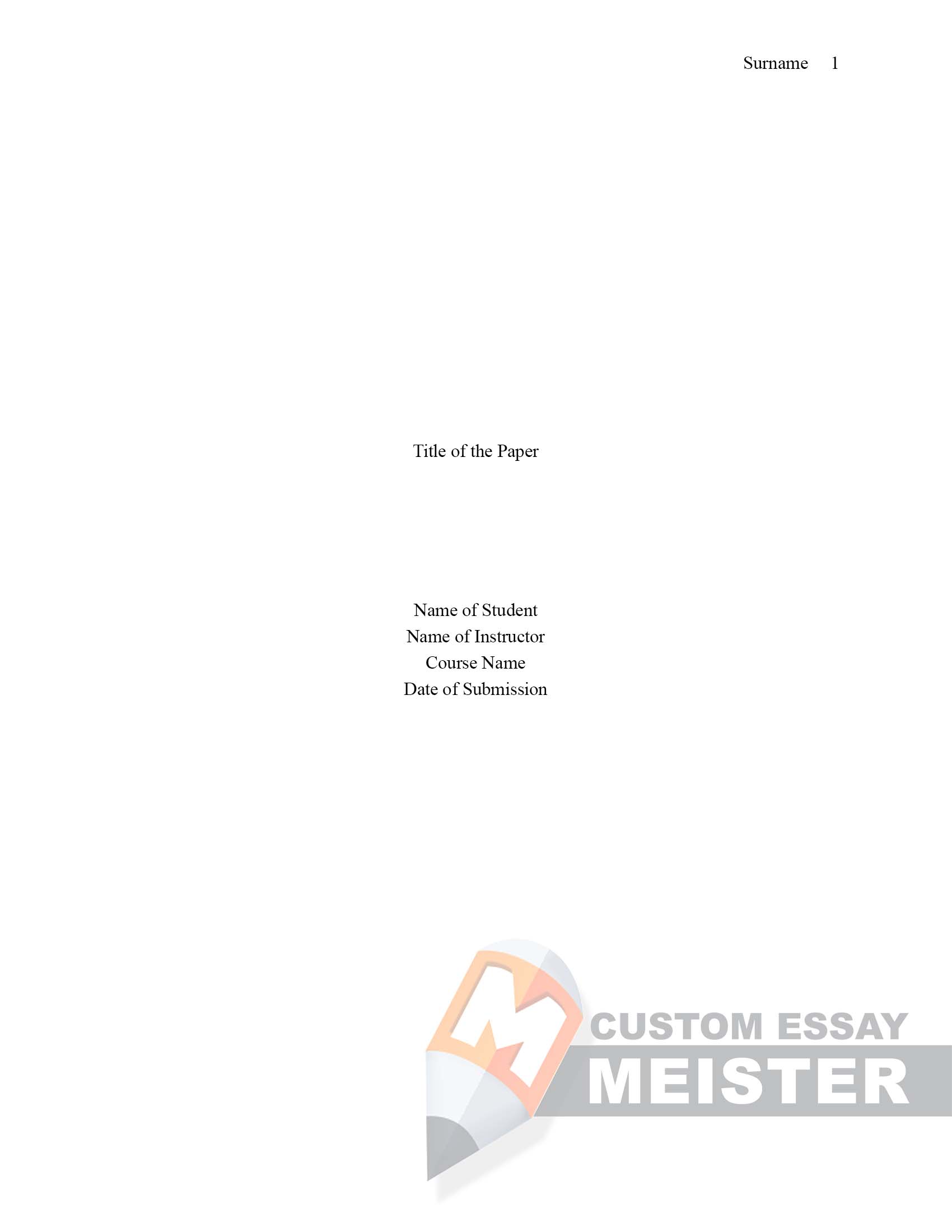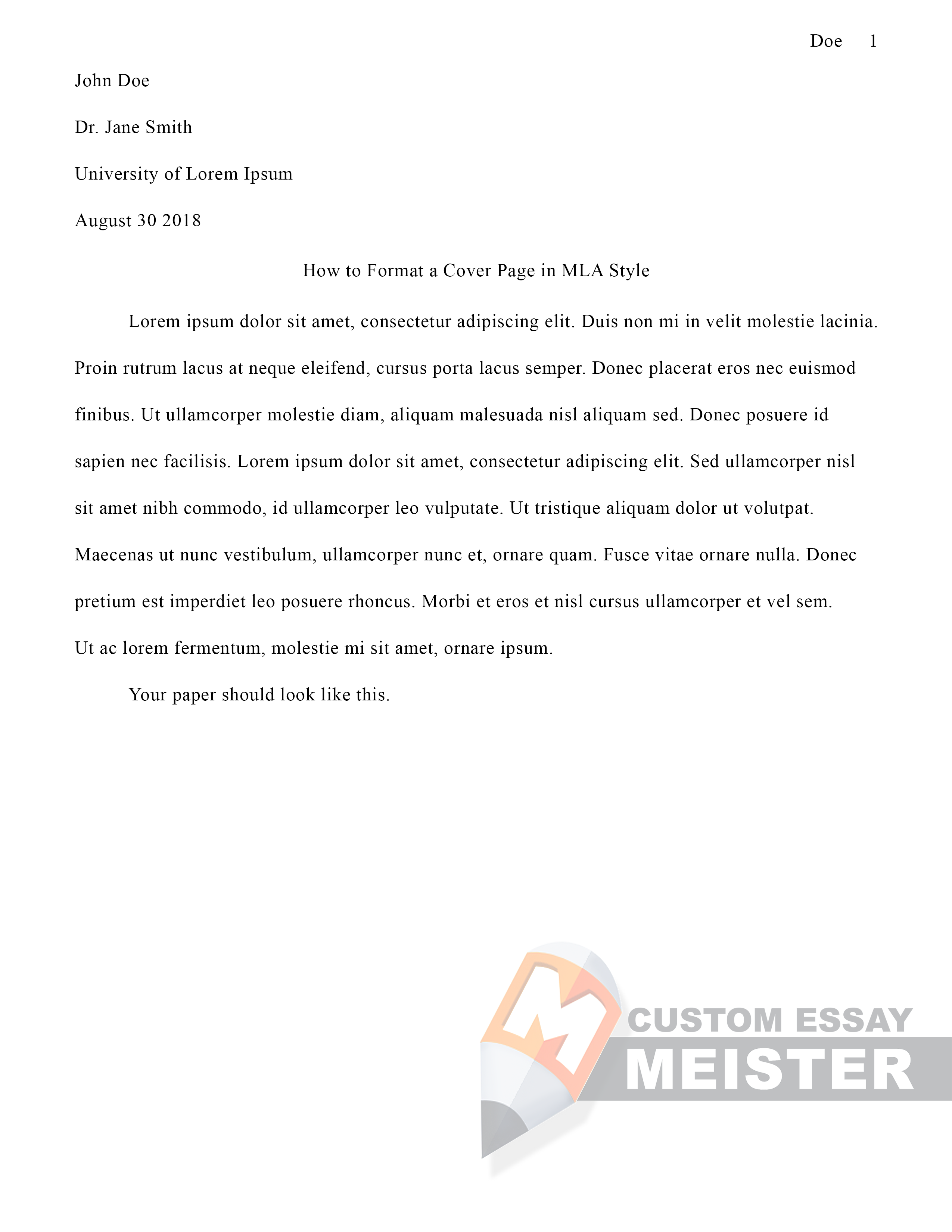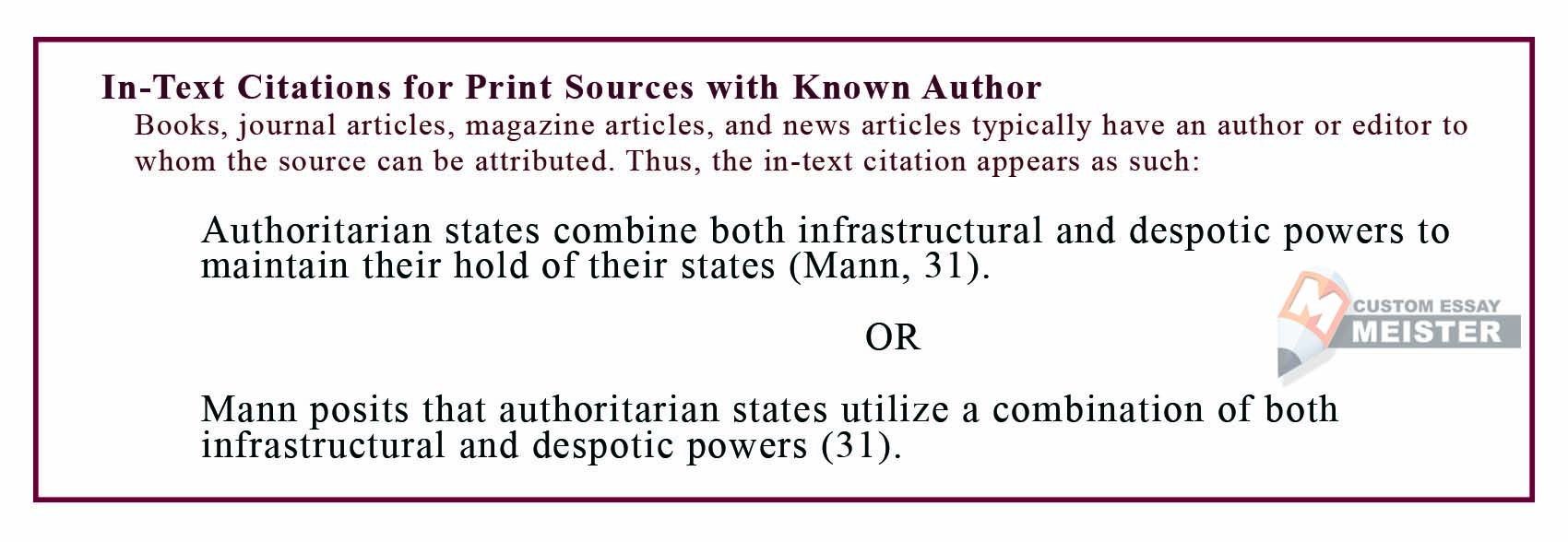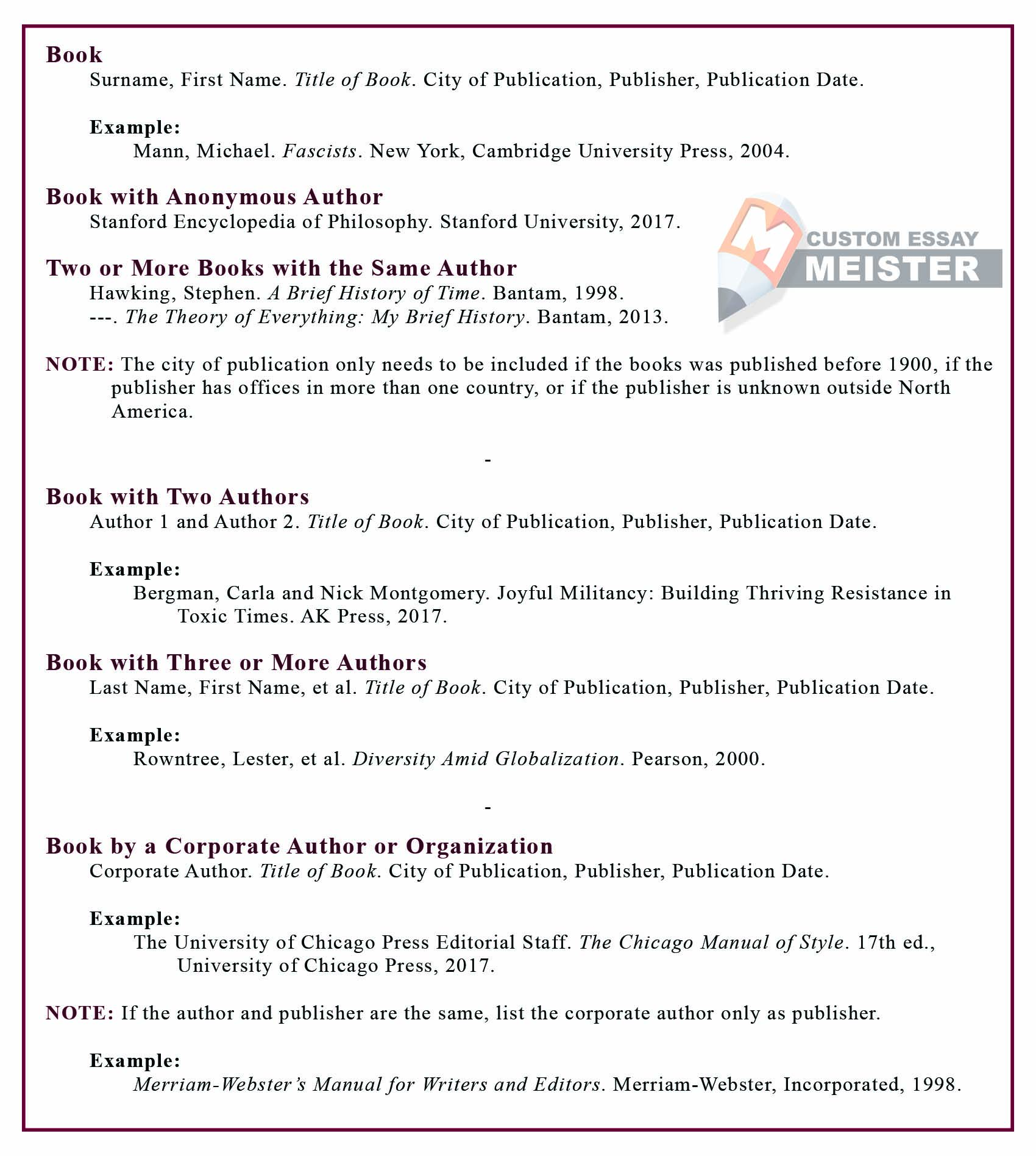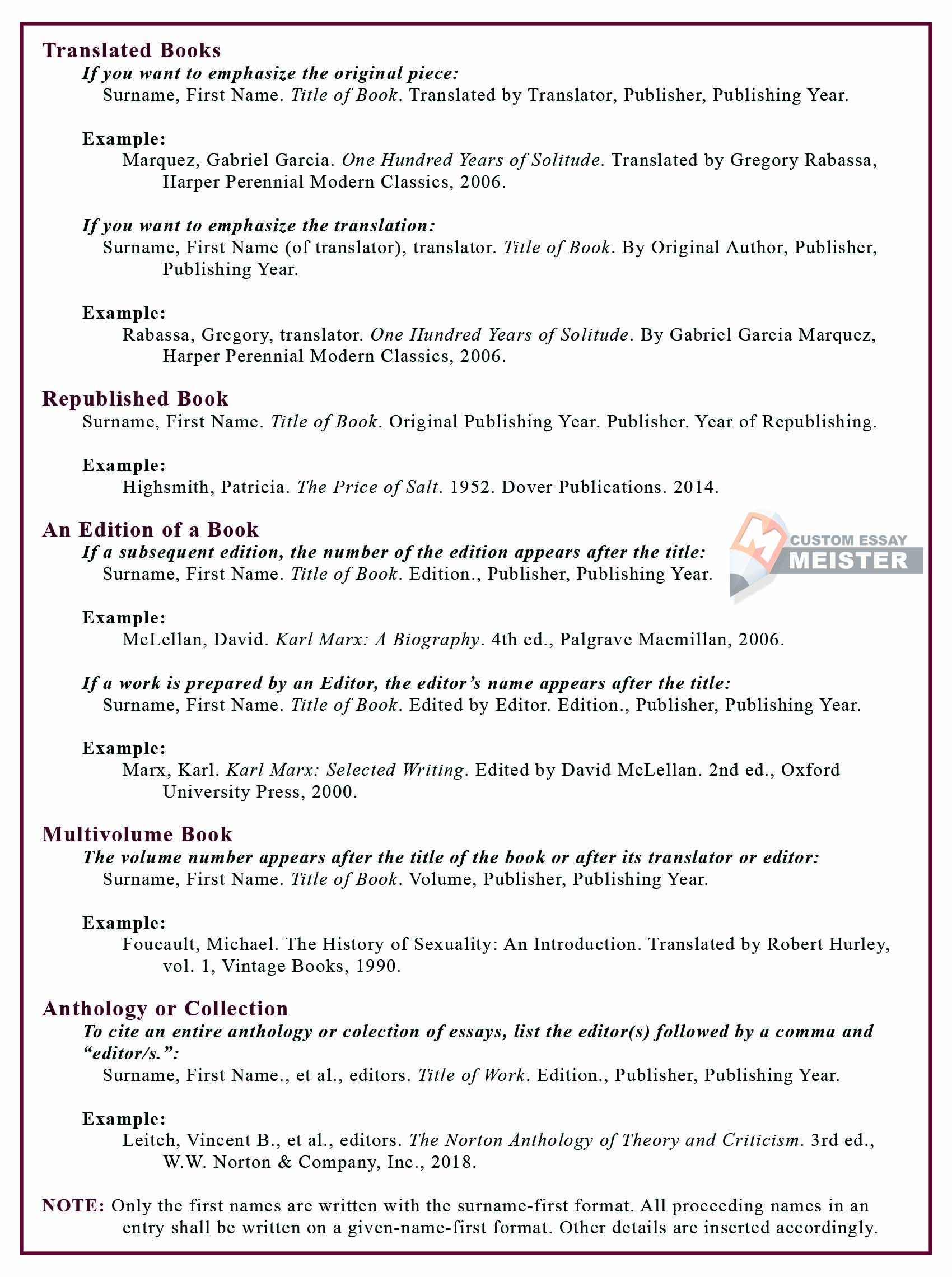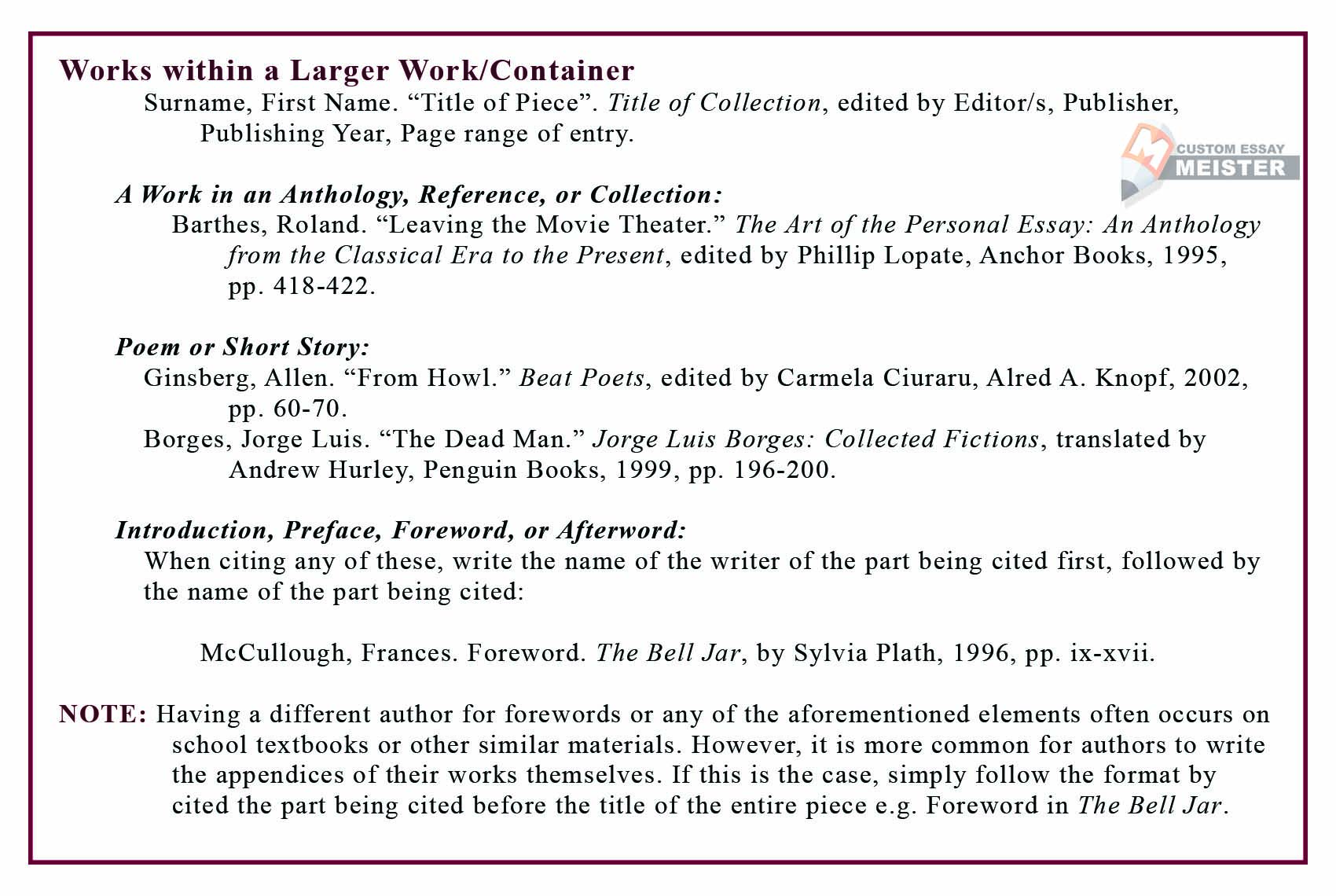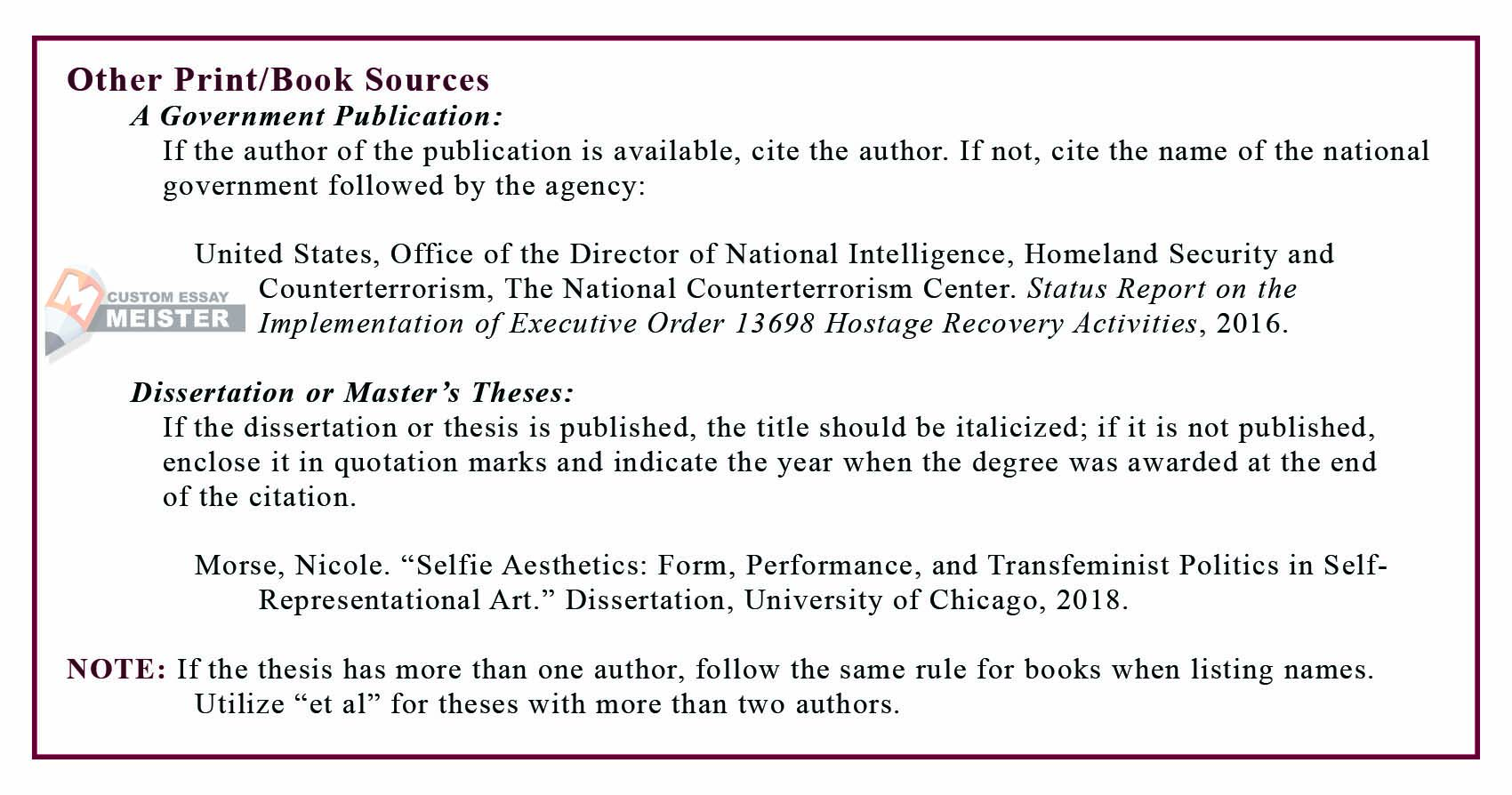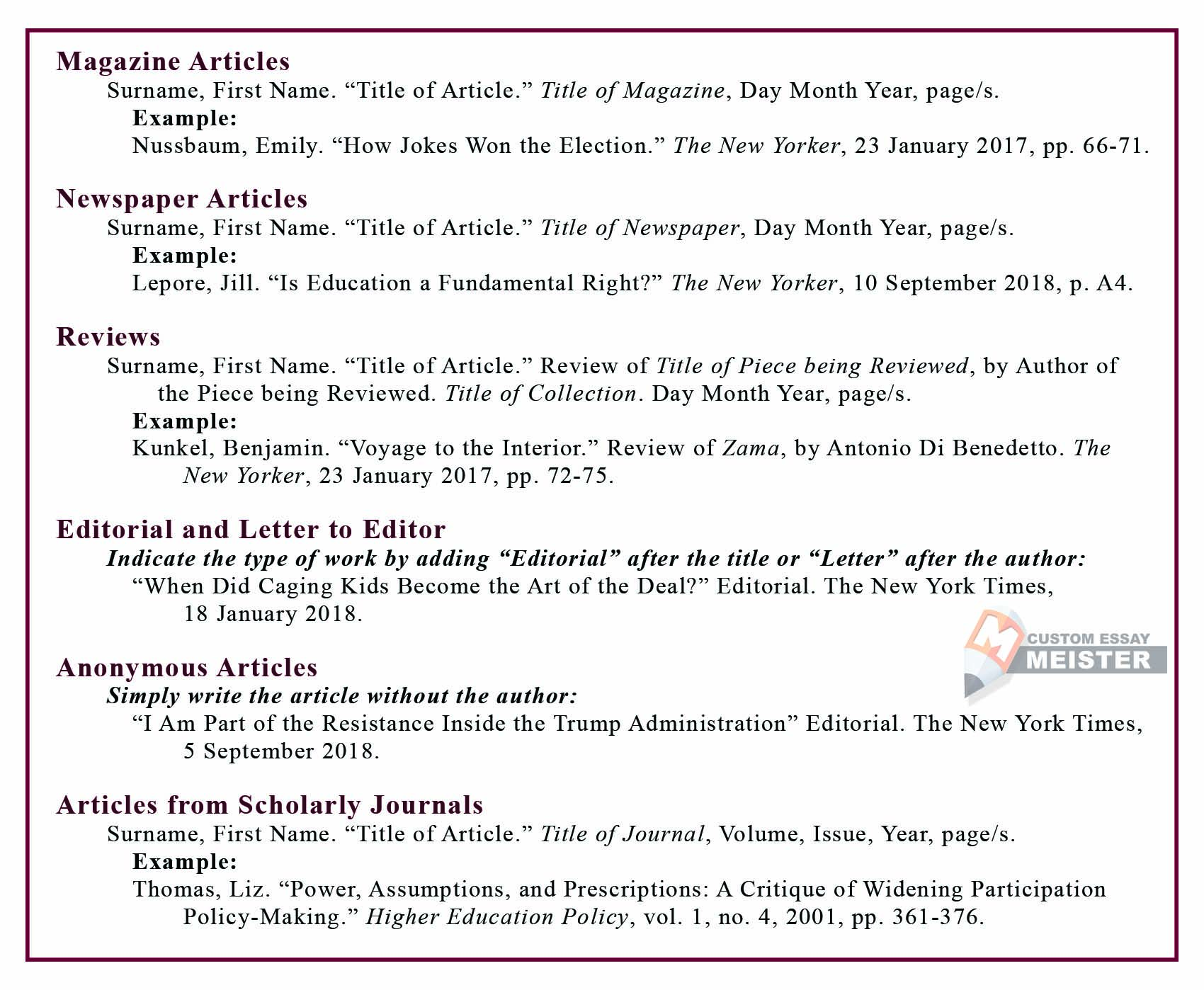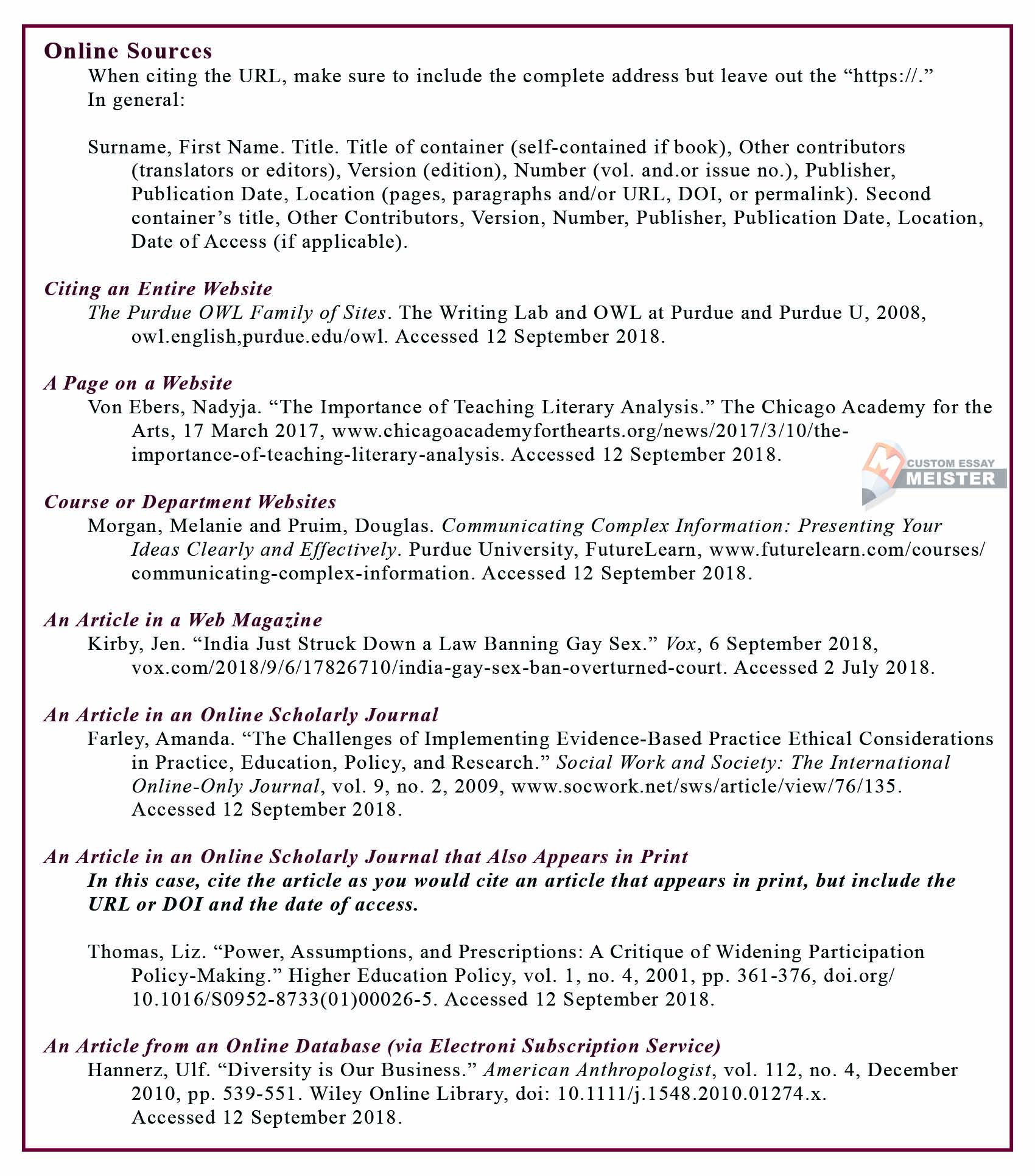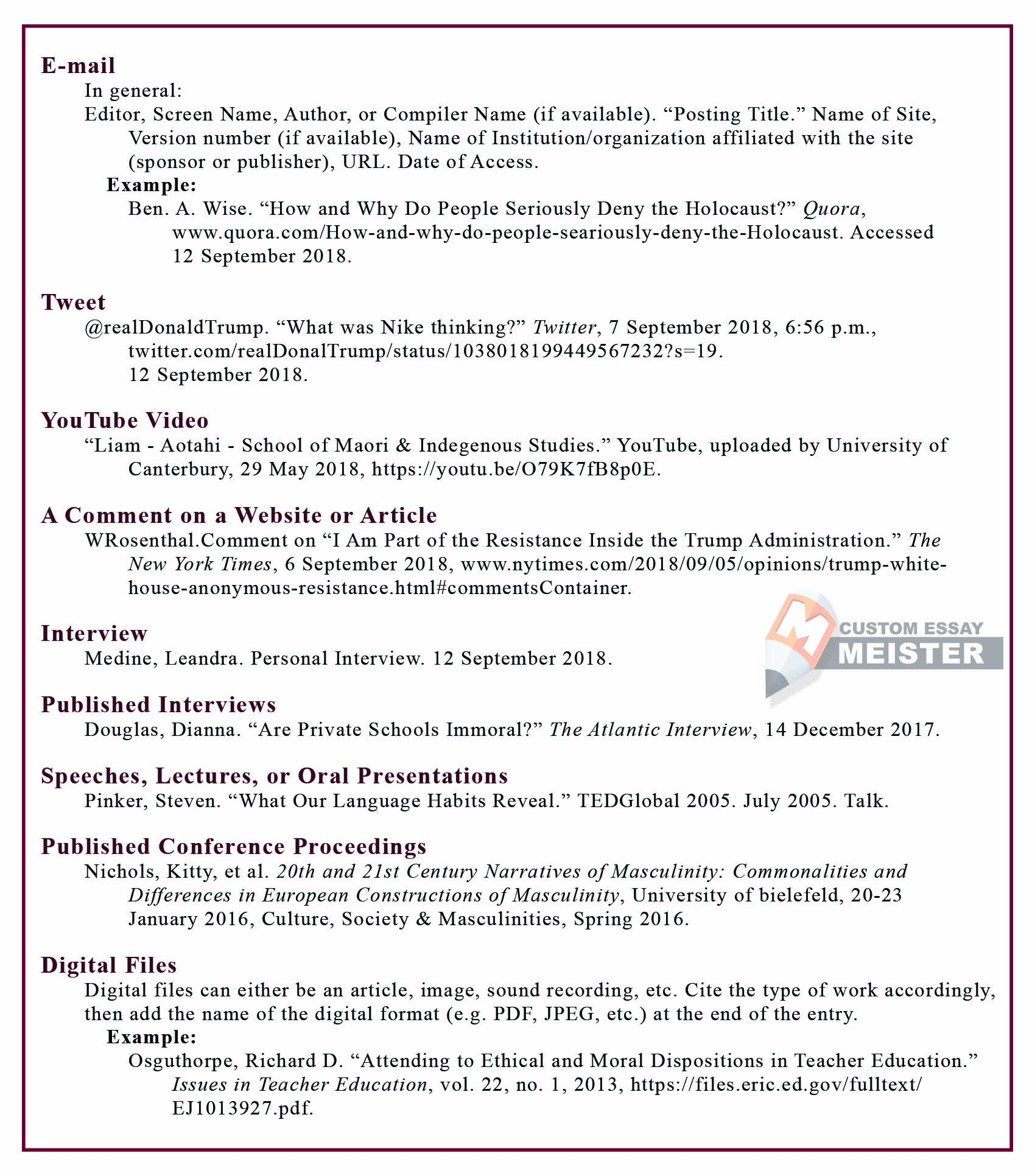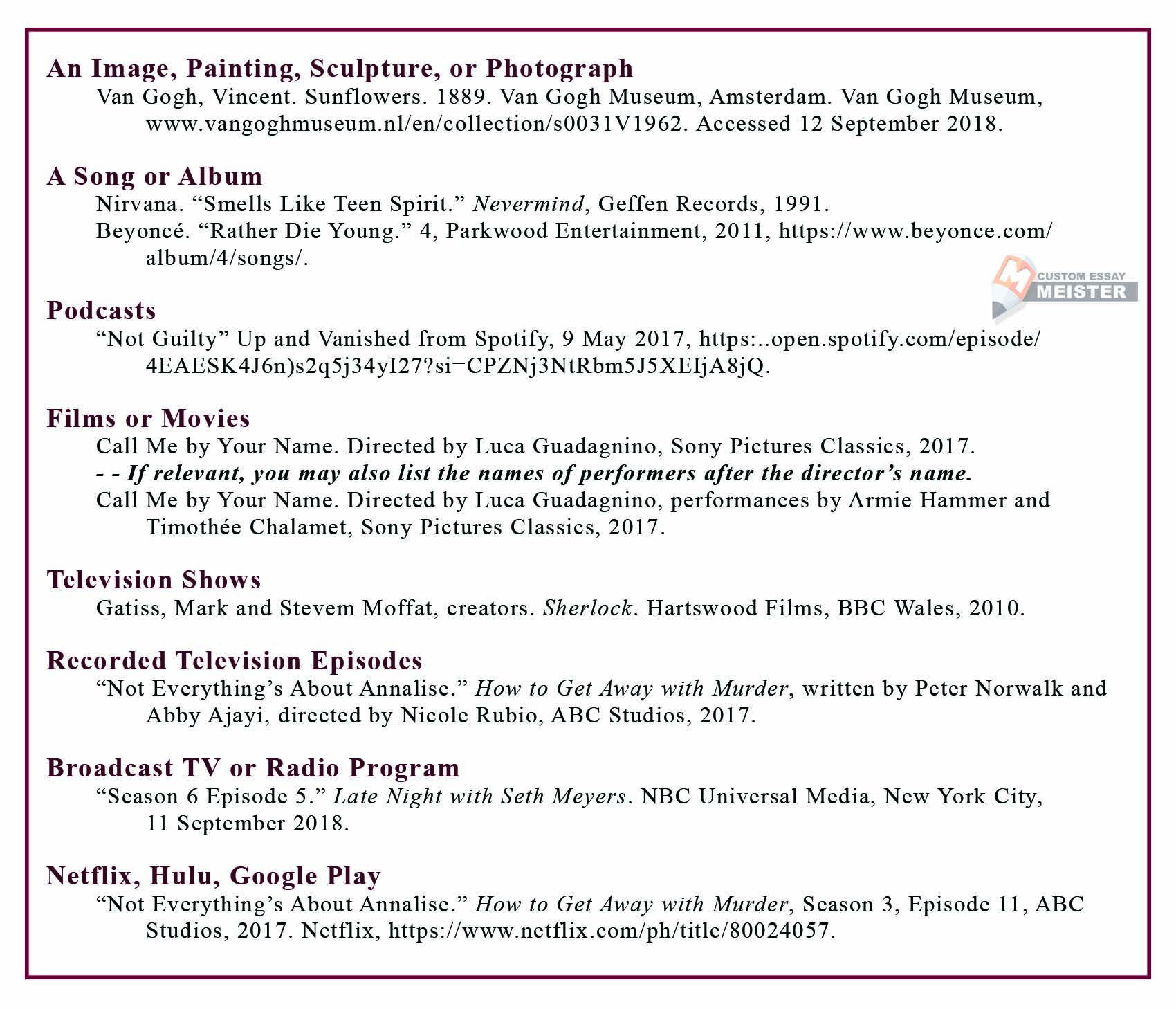The MLA Academic Style
The MLA Academic Style
The Modern Language Association (MLA) citation style is a documenting system developed by the Modern Language Association for humanities disciplines. This is commonly used by students and writers for essays on Language, Literature or Literary Criticism, and Cultural Studies.
The MLA citation style has been used by students and scholars for more than half a century. However, it is regularly updated to meet the growing needs of the academe. Currently, the MLA citation style is on its 8 th edition.
The MLA style requires a Works Cited page, which appears at the end of the research paper. This is how to format your Works Cited page:
- 1-inch margin on all sides
- The words Works Cited should appear at the top and center of the page. It should NOT be italicized, in bold, or enclosed in quotation marks.
- The citation should be double spaced.
- The first line of each citation should be hanging. This means that the second line onwards should be indented by 0.5 inches.
The MLA Style Cover Page
The MLA style does not usually require a cover page, however, this is how your cover page should look like should your academic assignment requires you to utilize a cover page:
The usual MLA paper does not have a cover page but the content is preceded by the student's information, and it should look like this:
The MLA In-Text Citation
Some other specific stylistic elements of the MLA:
- Always include the location where you found your source. Always include either the DOI or the URL at the end, and it should always be followed by a period.
- All citation entries should end with a period.
- Capitalize each word in the titles of articles, books, and such. However, do not capitalize articles, prepositions, or conjunctions unless it is the first word of the title or subtitle.
- Titles of larger works, such as magazines, journals, or books should be italicized.
- Titles of shorter works, like poems and articles, should be enclosed in parentheses.
- Citation entries should be arranged in alphabetical order according to the author’s or editor’s last name.
- Titles or degrees of the author or editor are not included.
With these in mind, the standard MLA in-text citation follows the Author-Page number format such as: (Aarons, 26). Here are the specific rules for all the other source cases:
MLA In-Text Citation for Print Sources with Known Authors
MLA In-Text Citation for Works by Corporate Authors
MLA In-Text Citation for Print Source with no Known Authors
MLA In-Text Citation for Authors with the Same Last Name
MLA In-Text Citation for Multiple Authors
MLA In-Text Citation for Multiple Works by the Same Author
MLA In-Text Citation for Citing the Bible
MLA In-Text Citation for Citing Indirect Sources
MLA In-Text Citation for Citing Sources from the Internet
MLA In-Text Citation for Citing Time-Based Media Sources
The MLA Works Cited Page
The MLA academic style uses the term "Works Cited" instead of "References" for its reference page. Also, note that the city of publication only needs to be included if the book was published before 1900, if the publisher has offices in more than one country, or if the publisher is unknown outside North America.
This is how a standard MLA Works Cited page should look like:
Here are the details on how to format an MLA paper's Works Cited page:
MLA Rules on Books. This list encompasses various cases for book sources including the following:
- Books with anonymous author
- Two or more books with same author
- Books with two authors
- Books with three or more authors
- Books with corporate or organizational authors
Other book formats:
- Translated books
- Republished books
- Book editions
- Multi-volume books
- Anthology or Collections
Source/s within a Larger Work
MLA Rules on Government Publications and Dissertations
MLA Rules on Magazines, Newspapers, Reviews, Editorials, Anonymous Articles, and Scholarly Journals
MLA Rules on various Online Sources. This list includes the following:
- Entire website
- A page on a website
- Course of department websites
- An article in a web magazine
- An article in an online scholarly journal
- An article in an online scholarly journal that also appears in print
- An article from an online database (via Electronic Subscription Service)
MLA Rules on other Online Sources. This list includes:
- E-mails
- Tweets
- YouTube
- A comment on a website or web article
- Interviews
- Published interviews
- Speeches, lectures, or oral presentations
- Published conference proceedings
- Digital files
MLA Rules on Social Networking Sites such as:
- An online image, painting, sculpture, or photograph
- A song or album
- Podcasts
- Films
- Television shows
- Television episodes
- Broadcast TV
- Radio programs
- Netflix, Hulu, or Google Play
Next to the APA citation style , the MLA academic style is mostly utilized for papers focusing on literature or sociology. The MLA style is just a simple citing process to avoid plagiarism, especially because papers using MLA uses a lot of direct verses or quotations for analysis such as in analyzing poems or stories. Here are some more tips in writing academic papers in MLA style.
Also, in recognition of the fact that both MLA and APA evolved from a mother citation style, this is worth looking into .
